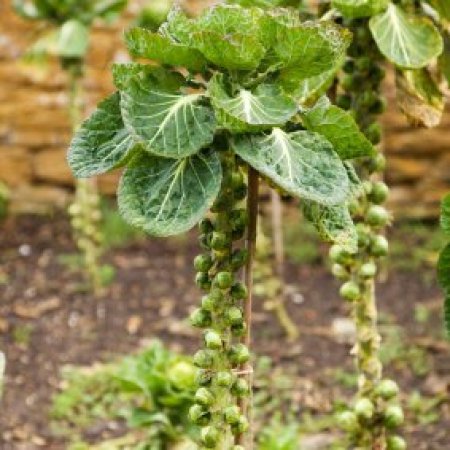Most of us scramble get our vegetables harvested before the first frost. But did you know that the taste of some crops actually improves after being touched by frost? That is because some plants react to cold temperatures by producing sugars-turning what might normally be a bitter flavor into something delicious and sweet.
Most members of the crucifer family belong to the genus Brassica, often called cabbage or mustard vegetables. This group includes crops like cabbage, mustard greens, broccoli, Brussels sprouts, cauliflower, kale, chard, collards, turnips, rutabagas, and radishes-just to name a few. The crucifers grow best in cooler weather, preferring moderately rich soil and a steady supply of moisture. They respond to falling temperatures by producing protective sugars, which make some of the more acidic or peppery tasting crops in this family go from bitter to sweet. This is especially true of kale, arugula, rutabagas, and Brussels sprouts. Gardeners who normally find their flavors too strong may think differently about them after tasting them post frost.
Brussels sprouts, in particular, are often grown for a season or two and then given up on-usually because they take forever to produce and ultimately end up tasting bitter. Gardeners new to growing this crop may not realize that the bottom leaves from the stalks should be removed as soon as the little "cabbages" are about the size of a match head. After the lower leaves are removed, growth kicks into high gear again once the cold weather arrives. Their flavor will be much sweeter if lightly nipped by frost before you harvest them.
Both the flavor and shelf-life of rutabagas improve if harvested after a few light frosts, but they should still be removed from the ground before the roots are exposed to a hard freeze. Keep in mind if deer are a problem in your area, your rutabagas may need some extra protection to get them to harvest. Deer are likely to sniff out a row of rutabagas-they love them.
A few roots crops, like parsnips and carrots, remain unharmed after a light frost while improving in flavor. Cold temperatures trigger a breakdown of existing starches, which are then converted into soluble sugars. The sugars act like an anti-freeze (having a freezing point lower than water), and given them an extra degree of protection as temperatures continue to drop.
Parsnips ("neeps") produce long, white, carrot-like roots that are nutty and sweet tasting. Some gardeners leave them in the ground during winter and claim they are sweeter when dug up in the spring. With the proper protection, carrots can also be left in the ground and harvested for much of the winter. Before a hard frost, cut the tops off your parsnips and carrots and cover the rows with a sheet of wire netting (milder regions), or clear polyethylene (cold-winter regions).

About The Author: Ellen Brown is an environmental writer and photographer and the owner of Sustainable Media, an environmental media company that specializes in helping businesses and organizations promote eco-friendly products and services.
Add your voice! Click below to comment. ThriftyFun is powered by your wisdom!